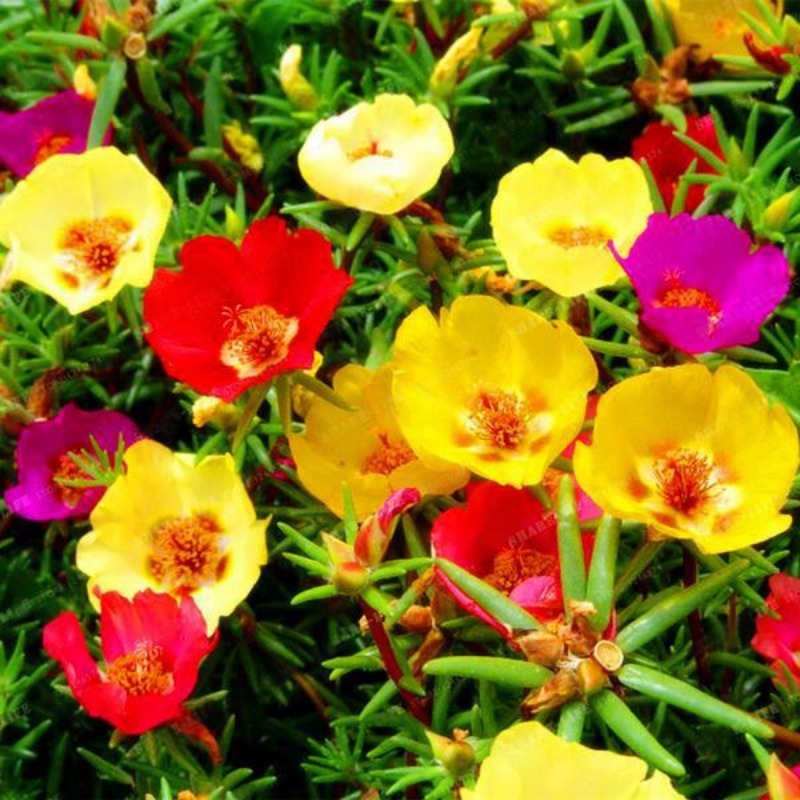- Species and varieties: Purslane (Portulaca oleracea) is a succulent plant known for its vibrant, double-flowered varieties. These varieties include a range of colors such as red, pink, yellow, and white. Purslane is often grown as an ornamental plant due to its attractive flowers and ground-covering habit.
- Hybrid or heirloom: Purslane double flower seeds are typically hybrid varieties. These hybrids are bred for their enhanced flower size, color vibrancy, and overall plant vigor. While heirloom varieties of purslane exist, the double-flowered types are usually the result of selective breeding.
- Pruning and training: Purslane requires minimal pruning. However, regular deadheading (removal of spent flowers) can encourage continuous blooming and prevent the plant from becoming leggy. Purslane can spread rapidly, so occasional trimming may be necessary to keep it within desired boundaries.
- Fertilization needs: Purslane is a low-maintenance plant with minimal fertilization needs. It can thrive in nutrient-poor soils, but for optimal growth and flowering, a balanced, slow-release fertilizer can be applied once during the growing season. Over-fertilization should be avoided as it can lead to excessive foliage growth at the expense of flowers.
- Hardiness zones: Purslane is suitable for USDA hardiness zones 2-11. It is a versatile plant that can thrive in a wide range of climates, from temperate to tropical regions.
- Climate requirements: Purslane prefers warm, sunny conditions and well-drained soil. It is drought-tolerant and can thrive in poor soil conditions, making it an excellent choice for xeriscaping and low-maintenance gardens. Purslane can also tolerate light frost but performs best in temperatures between 70-90°F (21-32°C).




